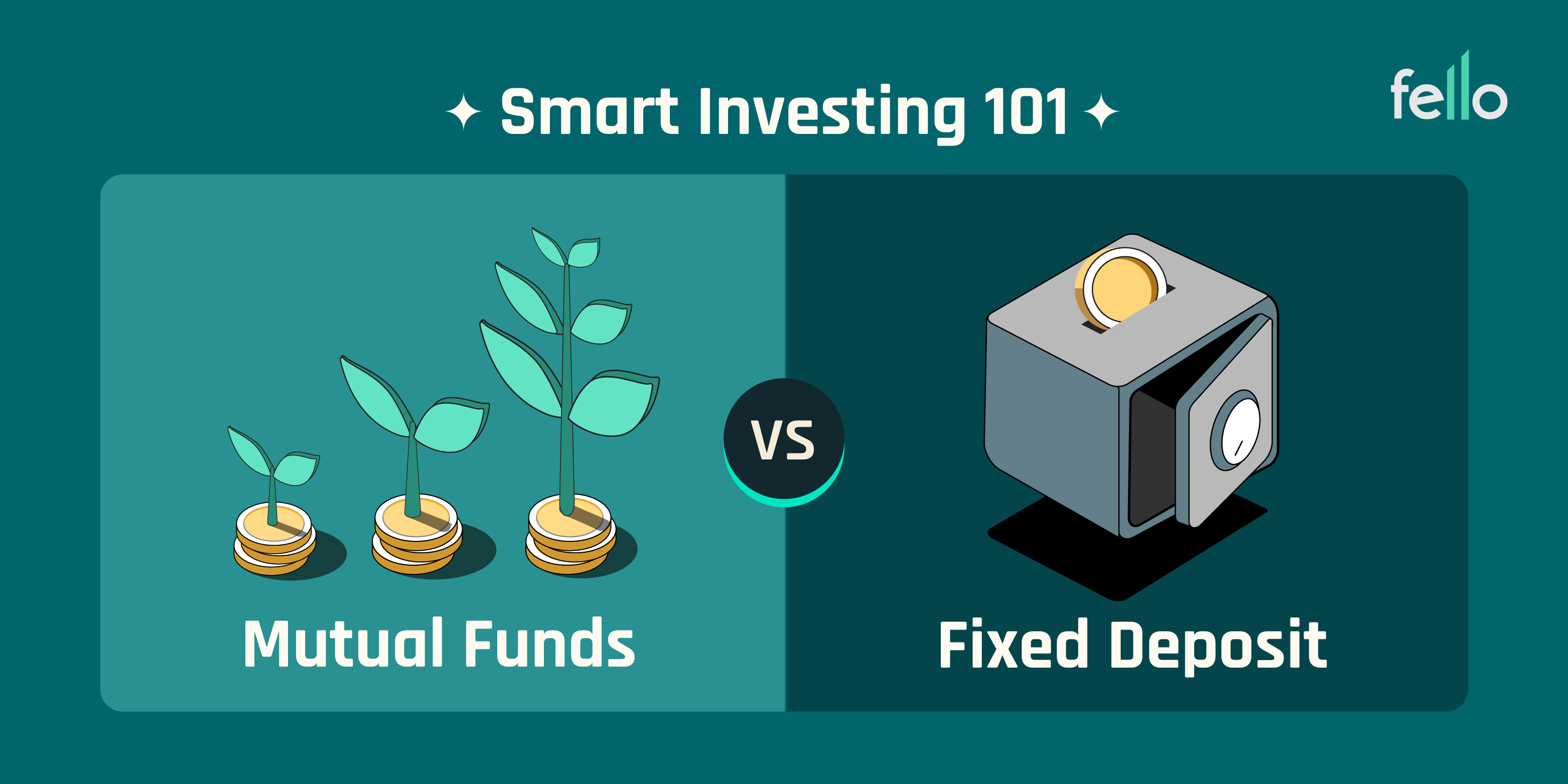Navigating the diverse landscape of investment options often leads investors to a crucial decision: how much to allocate to traditional fixed deposits (FDs) versus dynamic mutual funds (MFs). Striking the right balance between these two investment avenues depends on various factors, including financial goals, risk tolerance, and investment horizon. In this blog, we explore the considerations and guidelines to help investors determine the optimal allocation between fixed deposits and mutual funds for a well-rounded and diversified investment portfolio.
Understanding Fixed Deposits
Fixed deposits, characterized by stability and guaranteed returns, have long been favored by conservative investors. These financial instruments involve depositing a lump sum amount with a financial institution for a predetermined period, during which the investor receives a fixed interest rate. Fixed deposits provide capital preservation and predictable returns, making them suitable for short-term financial goals, emergency funds, and risk-averse investors.
However, fixed deposits come with limitations. The returns are relatively lower compared to market-linked instruments, and the interest earned is subject to taxation. Additionally, the liquidity of fixed deposits can be restricted due to lock-in periods, and the returns may not always keep pace with inflation, impacting real returns.
Understanding Mutual Funds
Mutual funds, on the other hand, represent a diverse array of investment vehicles, pooling money from multiple investors to invest in a variety of assets such as stocks, bonds, and other securities. Mutual funds offer professional fund management, liquidity, and the potential for higher returns compared to fixed deposits. Investors can choose from equity, debt, hybrid, and thematic funds based on their risk appetite and financial goals.
While mutual funds provide the opportunity for capital appreciation, they also expose investors to market volatility. The returns are not guaranteed, and the value of the investment fluctuates based on market conditions. Mutual funds are suitable for long-term financial goals, wealth creation, and investors willing to navigate the risks associated with market-linked instruments.
Determining the Allocation
The ideal allocation between fixed deposits and mutual funds depends on individual circumstances and financial objectives. Here are key considerations to help determine the optimal balance:
- Risk Tolerance:
- Assess your risk tolerance. If you have a low-risk tolerance and prioritize capital preservation, a higher allocation to fixed deposits may be appropriate.
- For investors comfortable with market fluctuations and seeking higher returns, a larger portion of the portfolio can be allocated to mutual funds.
- Investment Horizon:
- Consider your investment horizon. Fixed deposits are ideal for short-term goals, while mutual funds are better suited for long-term wealth creation due to the potential for compounding.
- Financial Goals:
- Align the investment allocation with your financial goals. If you have specific short-term goals, such as saving for a down payment or a vacation, fixed deposits may be more suitable.
- Long-term goals, such as retirement or education funding, may benefit from a higher allocation to mutual funds for the potential to generate higher returns over time.
- Diversification:
- Diversify your portfolio to mitigate risk. Combining fixed deposits and mutual funds provides a balanced approach, offering stability from fixed deposits and growth potential from mutual funds.
- Market Conditions:
- Stay informed about market conditions. During periods of economic uncertainty, a higher allocation to fixed deposits may offer a safe harbor, while favorable market conditions may warrant a larger exposure to mutual funds.
Conclusion
In conclusion, determining how much to invest in fixed deposits versus mutual funds involves a careful evaluation of individual financial circumstances and goals. Striking the right balance between these two investment avenues allows investors to leverage the stability of fixed deposits and the growth potential of mutual funds. As financial landscapes evolve, regularly reassessing the allocation based on changing goals and market conditions ensures a dynamic and well-optimized investment portfolio.
For investors seeking a holistic approach to investment, Fello emerges as a game-changer. Offering not only traditional investment options like fixed deposits but also peer-to-peer lending and digital gold investments, Fello provides a diverse range of opportunities. With the potential for returns up to 12% and a rewards system, Fello combines innovation with reliability, empowering investors to explore new avenues for wealth creation. Embrace a comprehensive investment strategy with Fello, where traditional values meet cutting-edge opportunities, setting the stage for a balanced and rewarding financial journey.

